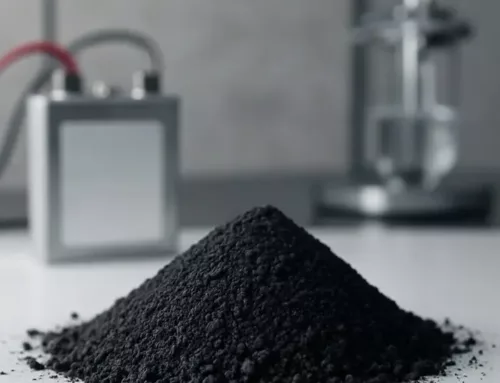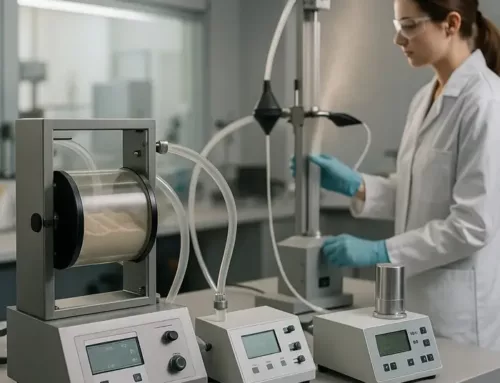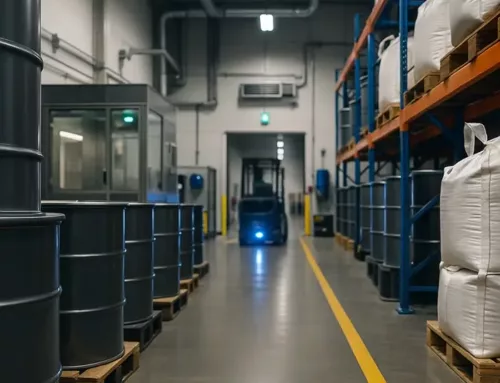Check out these related articles:
In this article we'll dive into the importance of hygroscopicity in food powders processing. In food powder processing, hygroscopicity often flies under the radar — until things go wrong. Caked spices, lumpy drink powders, or inconsistent batch quality all stem from one common trait: the powder's ability to absorb moisture from the air. That trait, known as hygroscopicity, plays a crucial role in product stability, flowability, shelf life, and consumer satisfaction.
What Is Hygroscopicity?
Hygroscopicity refers to the tendency of a powder to attract and retain water molecules from its surroundings. This interaction depends on environmental humidity, the powder's surface chemistry, and its particle structure.
For food manufacturers, understanding and measuring hygroscopicity is essential. Even trace moisture can trigger clumping, reduce flowability, or initiate unwanted chemical or microbial activity — all of which compromise product quality.
Why hygroscopicity in food powders processing matter
Food powders like milk, whey protein, instant coffee, and flavorings are especially vulnerable to moisture uptake. Here's why hygroscopicity is so critical:
-
Shelf Life: Highly hygroscopic powders can absorb moisture during storage, leading to microbial growth or chemical degradation.
-
Flowability and Caking: When powders absorb moisture, they tend to clump or cake. This disrupts dosing, mixing, and packaging.
-
Sensory and Functional Impact: Moisture can alter solubility, texture, and mouthfeel — impacting both product performance and consumer experience.
How Is Hygroscopicity in Food Powders Measured?
Several techniques help quantify hygroscopicity, but the most common approach in the food industry is moisture sorption isotherm analysis. This method involves exposing a powder to controlled humidity levels and measuring the amount of water it absorbs at equilibrium.
The result is a sorption isotherm curve, which provides insights into:
-
Moisture content vs. relative humidity
-
Critical humidity thresholds for caking
-
Safe storage conditions for each powder
Dynamic Vapor Sorption (DVS) is a widely used tool in this context. It allows real-time, automated tracking of weight changes in the powder as humidity increases or decreases, offering precise data for formulation and packaging design.
Recent Trends and Practical Applications of hygroscopicity in food powders
The push for cleaner labels, plant-based protein powders, and more functional food blends has increased the complexity of powder behavior. Many of these newer formulations are more hygroscopic than traditional ones.
To address this, food manufacturers are:
-
Using moisture barrier coatings on particles
-
Selecting anti-caking agents more strategically
-
Designing smart packaging solutions, such as low-permeability pouches with desiccants
-
Developing predictive shelf life models using isotherm data
In the protein powder segment, for example, companies are now screening raw ingredients for hygroscopic behavior early in the development process to ensure that the final blend doesn't compromise flow or stability.
Best Practices for Managing Hygroscopicity
To mitigate moisture-related issues, consider the following strategies:
-
Characterize hygroscopicity during early-stage development
-
Test powders under real-world humidity conditions
-
Use sorption data to guide storage and transport guidelines
-
Collaborate with packaging experts to align barrier properties with sorption profiles
Final Thoughts on hygroscopicity in food powders processing
Hygroscopicity may not be the flashiest powder property, but it's one of the most influential in food manufacturing. By measuring it early, managing it carefully, and designing around it smartly, companies can avoid costly quality issues and deliver a better product to market.
As food powders become more functional and diverse, understanding their interaction with moisture will only grow in importance. Hygroscopicity isn't just about avoiding clumps — it's about protecting quality from the inside out.




